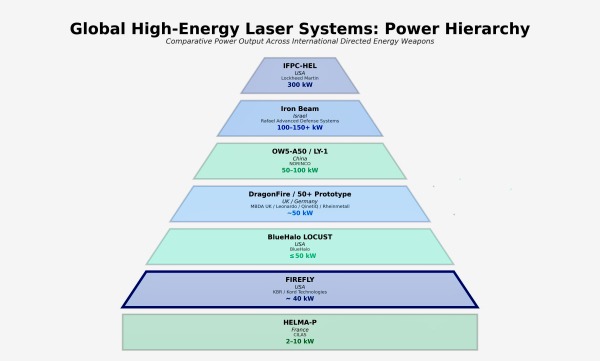From Huntsville to the Future: KBR’s FIREFLY Laser Moves U.S. Defense Innovation Forward
Huntsville reaffirmed its role as a national center of defense technology on November 6, when KBR opened its doors for a rare demonstration of its FIREFLY high-energy laser system. Media and industry observers watched as a bright beam tracked and disabled a test target—offering a glimpse into how directed-energy weapons may soon counter the small unmanned aircraft shaping modern conflict. For Huntsville, the demonstration emphasized both technological progress and the city’s growing influence in next-generation defense programs.
A Rare Look Inside KBR’s Defense Work
KBR, a global engineering and defense contractor with more than 1,000 employees in the region, hosted the event as part of a broader showcase of its missile defense integration and prototyping capabilities. Attendees toured the company’s prototyping facility, where engineers build components that support modernization across the Department of War. These capabilities reflect Huntsville’s long-standing role within the nation’s aerospace and defense ecosystem, which includes Redstone Arsenal, NASA’s Marshall Space Flight Center, and a network of private-sector innovators.
“Our goal is to advance national defense while strengthening Huntsville’s high-tech economy,” said Scot Butkis, KBR Vice President of the Missile, Aviation and Ground Systems Division.
FIREFLY’s Role in a Modern Defense Strategy
FIREFLY is considered “field-ready” in that it can be deployed for demonstrations and integrated into evaluation architectures, even as it continues through the testing and prototyping phase. The 40 kW system detects small drones at up to three miles, engages them at roughly 1.5 miles, and neutralizes targets within seconds. Its capabilities are tailored to counter the types of low-cost, highly mobile threats that increasingly appear in global conflict zones.
Rather than focusing solely on power, FIREFLY’s strength lies in its modular, palletized design and ability to connect with radar and command-and-control networks. It integrates with programs based at Redstone Arsenal, such as Sentinel Radar and lower-tier interceptors, allowing the system to plug into broader defense architectures. FIREFLY carries its own power and thermal management systems, enabling deployment on a variety of platforms without specialized infrastructure.
This design reflects a wider shift in U.S. defense strategy: pairing mid-power lasers with real-time sensors to create precise, cost-effective layers of protection against drones and other small unmanned aerial systems.
How the U.S. Compares Globally
While Sci-fi movies like Star Wars depict lasers as bright, fast-moving “blaster bolts,” real high-energy laser weapons—like KBR’s FIREFLY—are silent, invisible beams that burn through targets with precision rather than explosive impact. The similarity lies in the concept of directed energy as a clean, fast, cost-effective weapon, but unlike Star Wars’ cinematic firepower used for large-scale ship battles, today’s systems are designed for practical, defensive tasks such as disabling drones, intercepting small aircraft, and protecting critical infrastructure.
Directed-energy weapons are advancing worldwide, and several international programs have moved further toward full deployment or higher-output systems:
- Israel’s Iron Beam completed final testing and is slated for integration into the IDF’s air defense network.
- South Korea’s Block-I laser weapon is already deployed to frontline units and urban defense sites.
- France’s HELMA-P achieved a perfect interception record in testing and secured the 2024 Paris Olympics.
- China, the UK, and Germany operate mobile laser systems exceeding 50 kW, designed for vehicle or ship-based missions.
These programs highlight the pace of global competition, though higher power does not always mean broader capability. The U.S. maintains an advantage in integration—linking sensors, shooters, and command networks across multiple domains. In this context, FIREFLY fills a strategic mid-tier niche. It sits between ultra-light tactical lasers, such as Northrop Grumman’s 10 kW units, and the megawatt-class systems under development at Lockheed Martin for long-range and multi-platform applications.
Other U.S. companies complement FIREFLY with additional technologies: BlueHalo’s mobile counter-UAS lasers, Epirus’s high-power microwaves, and Lockheed Martin’s scaling of 300–500 kW systems. Together, they form the layered approach the Department of War is moving toward as drone use expands globally.

Graphic created by Kait Thursday.
Integration: The U.S. Edge
KBR engineers highlighted FIREFLY’s interoperability during the Huntsville demonstration. The system can operate independently, but its value grows when tied into broader architectures, receiving targeting data from radars and coordinating with interceptors in real time.
“Advanced threats require coordinated solutions,” said Mike Dahlberg, KBR Senior Director of Integrated Air and Missile Defense. “We’re focused on scalable technologies that adapt to different missions without major infrastructure changes.”
Tara Shiflett, Chief of Technology for Defense and Technology Solutions, noted that the development roadmap includes improvements in efficiency, ruggedization, and deeper compatibility with joint-service networks. As unmanned aircraft evolve, she said, modular systems that can be updated through software and component swaps will be increasingly vital.
Economic and Strategic Value for Huntsville
Beyond its defense applications, FIREFLY contributes to Huntsville’s growing high-tech workforce. Directed-energy systems require precision prototyping, software integration, and advanced engineering—all areas in which Huntsville excels. KBR’s ongoing investment supports local jobs while attracting federal partnerships and long-term research contracts to the region.
Laser systems also offer economic advantages in the field. Traditional missile interceptors can cost hundreds of thousands—or even millions—per shot. A laser engagement costs significantly less, adding a compelling financial incentive as drone activity increases worldwide.
Looking Ahead
As global competition in directed-energy intensifies, Huntsville continues to shape the direction of U.S. missile and air defense innovation. FIREFLY represents a practical, adaptable step forward—demonstrating how mid-power lasers, paired with networked sensors, can enhance national defense at a time when aerial threats are rapidly evolving.
The November 6 demonstration highlighted more than a technical achievement. It showed how Huntsville’s public-private ecosystem is driving the next generation of defense solutions, keeping the U.S. at the forefront of innovation in a rapidly shifting global landscape.
















